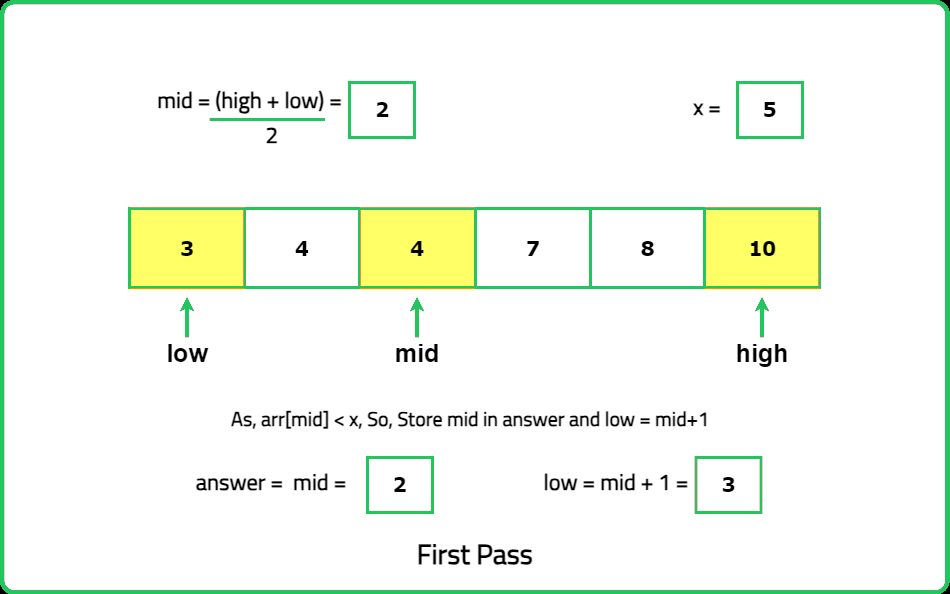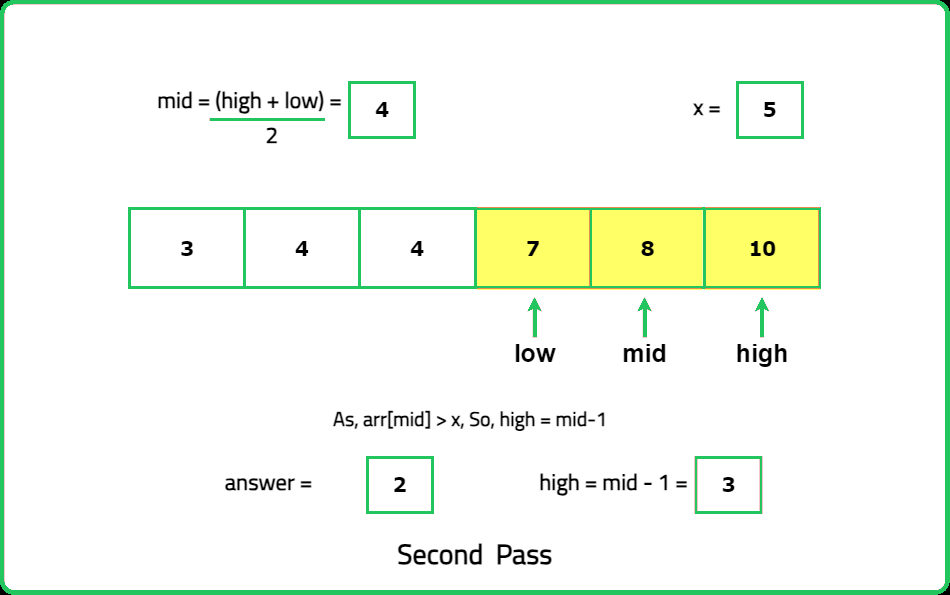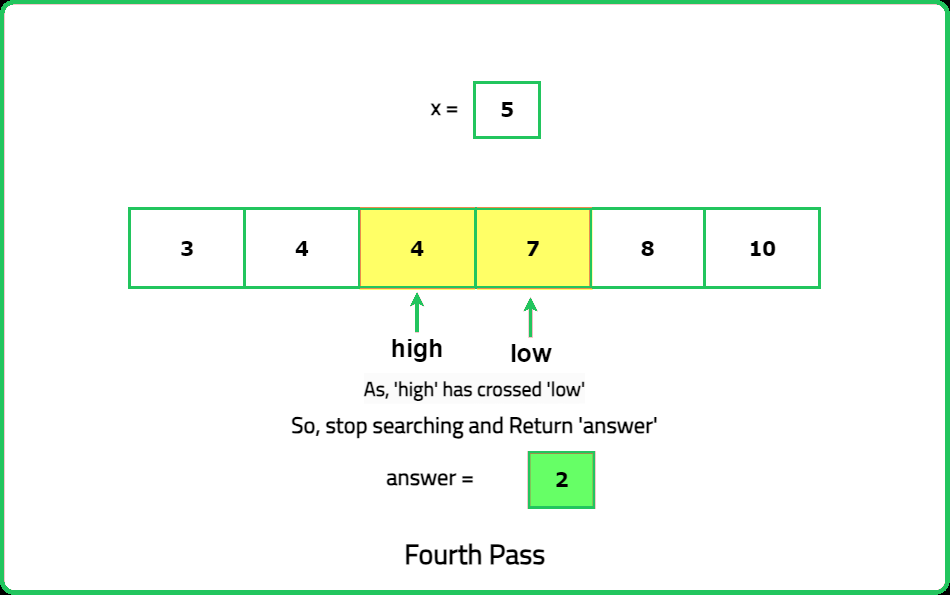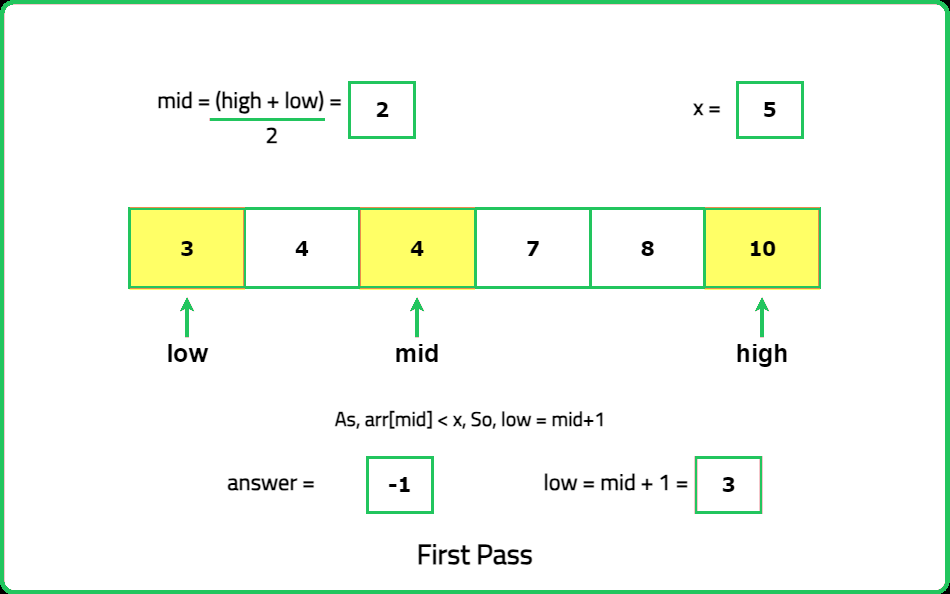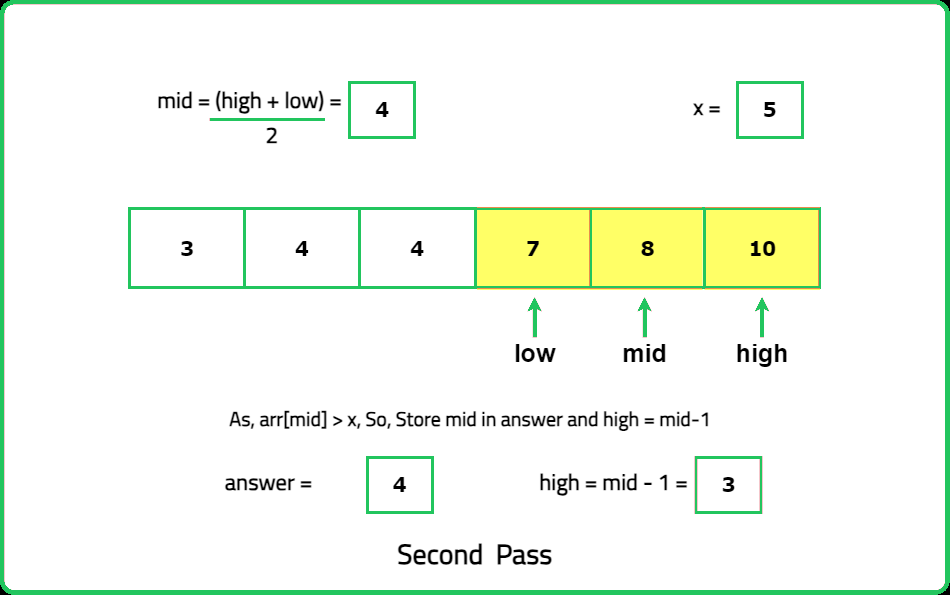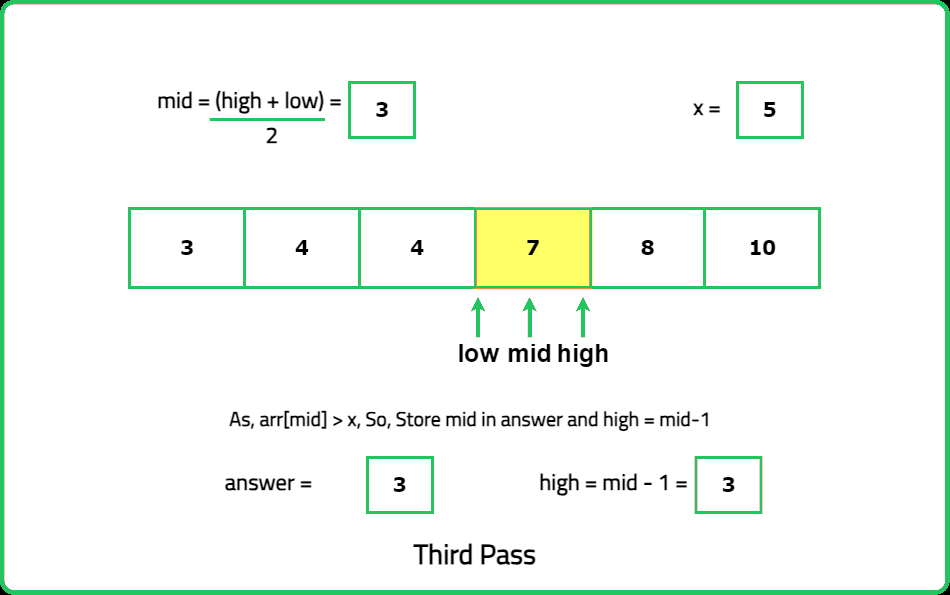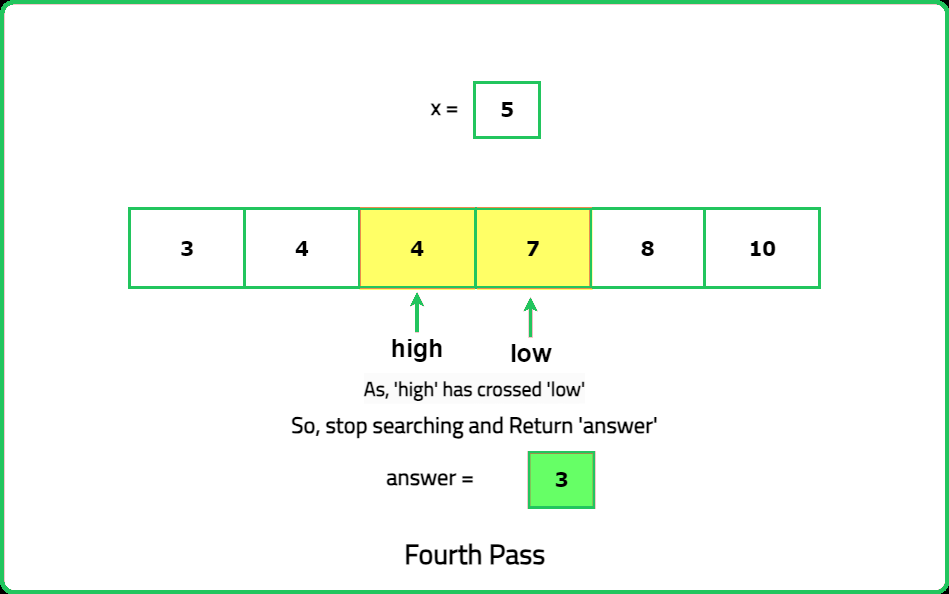Floor and Ceil in Sorted Array
Binary Search
Logic Building
Easy
Given a sorted array nums and an integer x. Find the floor and ceil of x in nums. The floor of x is the largest element in the array which is smaller than or equal to x. The ceiling of x is the smallest element in the array greater than or equal to x. If no floor or ceil exists, output -1.
Examples:
Input : nums =[3, 4, 4, 7, 8, 10], x= 5
Output: 4 7
Explanation: The floor of 5 in the array is 4, and the ceiling of 5 in the array is 7.
Input : nums =[3, 4, 4, 7, 8, 10], x= 8
Output: 8 8
Explanation: The floor of 8 in the array is 8, and the ceiling of 8 in the array is also 8.
Input : nums = [8, 4, 12, 2, 6, 10, 14], x= 1
Constraints
- 1 <= nums.length <= 105
- 0 < nums[i], x < 105
- nums is sorted in ascending order.
Hints
- "Perform a binary search for x in the sorted array. During the search: If nums[mid]≤x, update the floor to nums[mid] and move right. If nums[mid]≥x, update the ceiling to nums[mid] and move left."
- If x is smaller than the smallest element, the floor is −1. If x is larger than the largest element, the ceiling is −1.
Company Tags
Etsy
Lyft
Red Hat
GE Healthcare
KPMG
McKinsey & Company
Twilio
Chewy
Mastercard
American Express
Cloudflare
Nutanix
Wayfair
Ubisoft
Johnson & Johnson
PwC
Uber
Snowflake
Target
Ernst & Young
PayPal
Roblox
Zomato
Instacart
HashiCorp
TCS
Cognizant
Accenture
Infosys
Capgemini
Wipro
